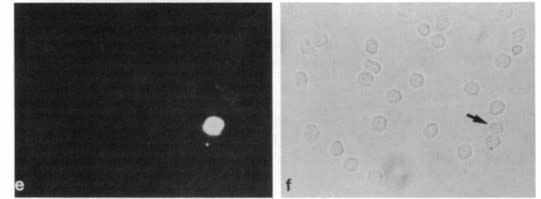
Cat. #158061
Anti-PKD (calreticulin)
Cat. #: 158061
Unit size: 100 ug
Availability: 10-12 weeks
Target: Tetracapsuloides bryosalmonae parasite antigen (calreticulin)
Class: Polyclonal
Application: ELISA ; WB
Reactivity: Tetracapsuloides bryosalmonae
Host: Rabbit
£300.00
This fee is applicable only for non-profit organisations. If you are a for-profit organisation or a researcher working on commercially-sponsored academic research, you will need to contact our licensing team for a commercial use license.
Contributor
Inventor: Abdo Alnabulsi
Institute: Vertebrate Antibodies Limited
Tool Details
*FOR RESEARCH USE ONLY
- Name: Anti-PKD (calreticulin)
- Class: Polyclonal
- Conjugation: Unconjugated
- Molecular weight: 41
- Reactivity: Tetracapsuloides bryosalmonae
- Host: Rabbit
- Application: ELISA ; WB
- Description: Proliferative kidney disease (PKD), caused by the myxozoan parasite Tetracapsuloides bryosalmonae, is one of the most economically damaging diseases to trout aquaculture. T. bryosalmonae has a two-host life cycle, as other myxosporeans, cycling between freshwater bryozoan and salmonid fish species. It is characterised by a swollen kidney and spleen, bloody ascites, and pale gills, indicating the fish becomes anemic at the late stage of the disease. This parasite is allowed to cross the renal tubules wall to proliferate within the interstitial tissue of kidney, inducing a chronic lymphoid hyperplasia marked by a strong parasite-driven immunosuppressant pathogenesis and a dysregulation of T-helper subsets. Fish recovering from PKD develop protective immunity to subsequent parasite challenge, providing the impetus for vaccine development. Polyclonal antibody used to identify T. bryosalmonae antigens will be able to elicit protective immune responses for developing DNA vaccines. Calreticulin released by an intracellular parasite is capable of entering the cytoplasm, which is able to be processed via MHC class I. It is could compete with host calreticulin for the binding of MHC molecule, and thus interfere with peptide loading and presentation. This is a polyclonal antibody used for the diagnosis of T. bryosalmonae parasite. It is a valuable tool to monitor Calreticulin role in parasite development as well as immune modulation of the host.
- Immunogen: Ovalbumin-conjugated synthetic peptide.
- Recommended controls: ELISA: peptide immunogen and recombinant protein WB: recombinant protein
Target Details
- Target: Tetracapsuloides bryosalmonae parasite antigen (calreticulin)
- Molecular weight: 41
- Target background: Proliferative kidney disease (PKD), caused by the myxozoan parasite Tetracapsuloides bryosalmonae, is one of the most economically damaging diseases to trout aquaculture. T. bryosalmonae has a two-host life cycle, as other myxosporeans, cycling between freshwater bryozoan and salmonid fish species. It is characterised by a swollen kidney and spleen, bloody ascites, and pale gills, indicating the fish becomes anemic at the late stage of the disease. This parasite is allowed to cross the renal tubules wall to proliferate within the interstitial tissue of kidney, inducing a chronic lymphoid hyperplasia marked by a strong parasite-driven immunosuppressant pathogenesis and a dysregulation of T-helper subsets. Fish recovering from PKD develop protective immunity to subsequent parasite challenge, providing the impetus for vaccine development. Polyclonal antibody used to identify T. bryosalmonae antigens will be able to elicit protective immune responses for developing DNA vaccines. Calreticulin released by an intracellular parasite is capable of entering the cytoplasm, which is able to be processed via MHC class I. It is could compete with host calreticulin for the binding of MHC molecule, and thus interfere with peptide loading and presentation. This is a polyclonal antibody used for the diagnosis of T. bryosalmonae parasite. It is a valuable tool to monitor Calreticulin role in parasite development as well as immune modulation of the host.
Applications
- Application: ELISA ; WB
Handling
- Format: Liquid
- Unit size: 100 ug
- Storage buffer: Unpurified anti-serum from rabbit preserved in 0.02% Thiomersal
- Shipping conditions: Shipping at 4° C



